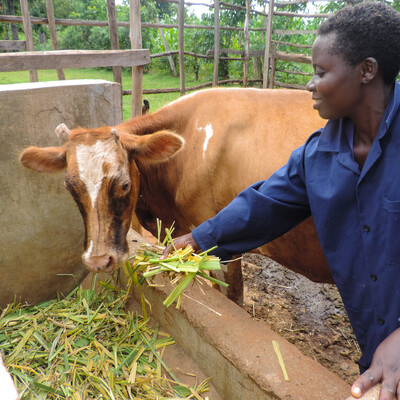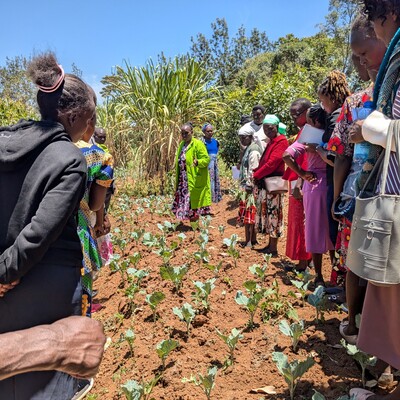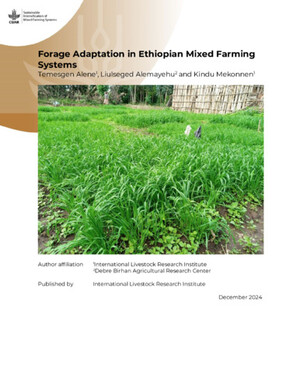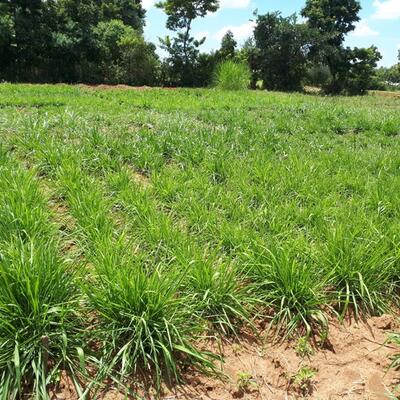
Genomic selection for tropical forage grasses: A solution to meet the growing global demand for animal-source foods
A recent review by the Brazilian Agricultural Research Corporation (EMBRAPA) and the International Livestock Research Institute (ILRI) published in Frontiers in Plant Science looks at how genomic selection could accelerate genetic gains in the development of new tropical forage cultivars, which promise to significantly improve livestock productivity.
With the world’s population expected to reach 9.7 billion by 2050, the global demand for animal-sourced foods is also expected to rise to around 221 million tonnes in Asia and 58 million tonnes in Africa alone. Tropical forages support a key proportion of the animal-sourced foods produced globally. The application of genomic selection would support increased rates of genetic gains in the breeding and development of new tropical forage cultivars, which would provide the opportunity for these cultivars to help improve animal productivity.
The review, which provides an overview of genomic selection, looks at the current scenario, recent advances and future prospects of applying genetic tools and strategies to accelerate breeding by focusing on elephant (Napier), Guinea and Brachiaria grasses. These three grasses are the most used livestock forages in many parts of the world, including Africa, Asia and Latin America.
Jorge Fernando Pereira, co-author of the paper and a researcher at EMBRAPA says ‘this review demonstrates the importance of collaborative efforts between ILRI and EMBRAPA and calls for a deeper understanding about the genomics of tropical forage grasses.’ Pereira says the collaboration between the two organizations in recent years has expanded genomic knowledge in Napier grass, which is an important step to implementing genomic selection in this species. ‘We still have a long way to go in order to elevate the breeding of tropical forage grasses to the same level as some crop species but working together will get us there’ he adds.
Breeding programs of tropical forage grasses face several challenges some of which include distribution of efforts between different species; evaluating several traits, which can be laborious and expensive, and the development and release of a new cultivar can take up to a decade. Genomic selection can reduce the breeding ‘interval cycle’ to half the time and is one of the main advantages supporting accelerating genetic gains. Genomic selection and its associated studies can enable the selection of specific traits concurrently, including nutritional value, yield and resistance to diseases and pests, to produce new cultivars which can meet the future demand for food and fodder in a changing environment.
Chris Jones, leader of the Feed and Forage Development program at ILRI says that ‘compared to most other crops, breeding of tropical forages has had little attention in the past with a number of popular cultivars 40 or 50 years old.’ He added that the application of genomic selection to these plant breeding efforts promises to significantly enhance genetic gains and support the development of new cultivars, which will support more efficient livestock production in the future.
For more information contact Jorge Fernando Pereira or Chris Jones
Download the full publication here.
Read a recent ILRI information brief on Feed and forage development program drought stress in tropical forages.
Other recent publications:
Habte, E., Muktar, M. S., Abdena, A., Hanson, J., Sartie, A. et al. 2020. Forage performance and detection of marker trait associations with potential for Napier grass (Cenchrus purpureus) improvement. Agronomy 10: 542.
Muktar, M. S., Habte, E., Teshome, A., Assefa, Y., Negawo, A. T. et al. 2021. Insights into the genetic architecture of complex traits in Napier grass (Cenchrus purpureus) and QTL regions governing forage biomass yield, water use efficiency and feed quality traits. bioRxiv.
Muktar, M. S., Teshome, A., Hanson, J., Negawo, A. T., Habte, E. et al. 2019. Genotyping by sequencing provides new insights into the diversity of Napier grass (Cenchrus purpureus) and reveals variation in genome-wide LD patterns between collections. Scientific Reports 9: 6936.
Negawo, A. T., Kumar, A., Teshome, A., Hanson, J. and Jones, C. S. 2017. Opportunities from molecular genetics for the improvement of Napier grass (Pennisetum purpureum). Agronomy 7: 28.
Photo credit: Harvesting green fodder, Uttarkhand, India (ILRI/Sapna Jarial)





















